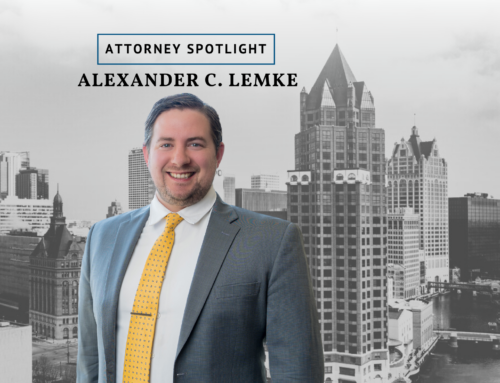Journal of Passthrough Entities – Choice of Entity Corner
In forming new business entities, as well as restructuring existing ones, whether or not two or more such entities should be grouped together for tax purposes comes up much more often now that the Patient Protection and Affordable Care Act1 (the “Affordable Care Act”) has mostly2 gone into effect. These grouping rules can be critical for purposes of determining whether any or all of such entities constitute an “applicable large employer” required to provide minimum essential coverage to its employees.3 This will become an even bigger issue as soon as the health insurance nondiscrimination provisions come into effect, potentially requiring all such grouped entities to have comparable health insurance coverage.4
Probably the most expansive of these grouping rules is the one contained in Code Sec. 414(c) (the “414(c) common control rules”), which simply provides that “under regulations prescribed by the Secretary, all employees of trades or businesses (whether or not incorporated) which are under common control shall be treated as employed by a single employer,” and that such regulations “shall be based on principles similar to the principles which apply in the case of subsection (b).”5 Subsection (b), in turn, requires that “all employees of all corporations which are members of a controlled group of corporations” must be treated together.6 In general, for this purpose,7 two or more business entities are grouped together if the same five or fewer individuals, estates or trusts own (a) at least 80 percent of the vote or value of each entity treated as a corporation or of the capital or profits interests of each entity treated as a partnership and (b) more than 50 percent of such vote/value or capital/profits interests, taking into account only the lowest percentage of such items held by each such owner.8
A problem arises because nearly all such closely held entities have in place some form of restriction to prevent interests in the entities from being transferred to competitors and others who are not active in the business, and the 414(c) common control rules contain provisions which exclude any interest “owned (directly or with the application of §1.414(c)-4) by an employee if such interest or stock is subject to conditions which run in favor of a common owner of such organization or in favor of such organization and which substantially restrict or limit the employee’s right … to dispose of such interest or stock” (the “employee exclusion rule”).9 The term “substantial conditions” is broadly defined to include any restriction notwithstanding that there might be no “discriminatory concession with respect to price.”10 Thus, even a right to buy back stock at fair market value, or even a right of first refusal, is covered.11
One question that arises at the outset is how the employee exclusion rule is to be applied in the context of entities that are treated as partnerships. The IRS has taken the position that an individual can be either a “bona fide partner” or an employee of a partnership, but not both.12 Thus, there is a real question as to whether or not the employee exclusion rule will ever apply to noncorporate entities. On the one hand, if the individual holding the interest is a “bona fide partner” and, therefore, cannot be an employee, then the rule should have no application. On the other hand, if the individual is not a “bona fide partner,” then presumably he or she does not really own any capital or profits interest in the partnership to begin with and, therefore, would not even be taken into account in applying the 414(c) common control rules.
Also note that in order for the employee exclusion rule to apply, the individual owner must be “an employee of such organization,” i.e., the organization being tested for common control purposes.13 Thus, if the individual is an employee of a related entity, presumably the employee exclusion rule would not apply. Although there is attribution of ownership,14 there does not seem to be any attribution of employment status.
Assuming there are employees in the mix, the employee exclusion rule applies only when five or fewer individuals, estates or trusts own at least 50 percent15 of the relevant vote/value or capital/profit interests, after taking into account all of the various attribution rules.16 For many closely held corporations, this 50-percent threshold test should be easy to satisfy, though it should be noted that potentially excludable ownership interests are not excluded in determining whether it is met.17
Once this threshold test is met, the employee exclusion rule could easily mean that some or even all of the ownership interests in brother–sister entities could be excluded because restrictions are quite common in closely held business entities in order to assure that the interests in such entities are maintained within a closely knit family or management group. As a consequence, the 414(c) common control rules provide that the employee exclusion rule will not apply if such a restriction also applies “to the interest or stock in such organization held by a common owner pursuant to a bona fide reciprocal purchase arrangement.”18 Note that, in order for this exception to apply, it is merely necessary for the condition to apply to the interest or stock held by “a” common owner, not all of them.19 Thus, if one owner owns 79 percent of the interests in the entity, and the other 21 percent is owned in equal shares by another 21 employees, and they all have a right of first refusal in the event that any of them seeks to sell their stock, their stock should not be excluded. Query: If one owner owns 40 percent of the interests in the entity, and six other owners own 10 percent each and the 40 percent owner has a right of first refusal on all of their interests, would their interest be excluded? Each one of them seems to be a “common owner,”20 and the restriction that applies to each of them “also applies to the interest or stock in such organization held by a common owner.”21 The question would be whether this is “pursuant to a bona fide reciprocal purchase arrangement.”22 Along those same lines, what happens in the fairly common ownership arrangement whereby the interest of each employed owner will be redeemed upon his or her retirement? Does it make a difference in determining whether the agreement is “bona fide” or “reciprocal” that some owners are older than others?
The language of the regulation itself also raises some issues. It clearly provides that a right of first refusal “whereby a common owner and the employee are given a right of first refusal with respect to stock of the employer corporation owned by the other party” qualifies for this exception.23 However, it goes on to state that if the agreement “also provides that the common owner has the right to purchase the stock of the employer corporation owned by the employee in the event the corporation should discharge the employee for reasonable cause, the purchase arrangement would not be reciprocal within the meaning of this subdivision.”24
This leaves open the question as to whether the exception would still apply if the employee also had the right to purchase the stock of the common owner if he or she were fired for reasonable cause. This is an important question. Many, many closely held enterprises require the interests of their owners to be retired by the entity whenever their employment or other engagement terminates, whether for cause, upon death or, in many cases, any other reason. Should these regulations really be interpreted to mean that, for example, when you have 10 equal shareholders and they agree to redeem the stock of any shareholder whose employment terminates, then you could potentially exclude the stock owned by each and every one of them? LTR 9723016 suggests otherwise. The ruling quotes the language from Reg. §1.1563- 2(b)(4)(ii), which is virtually identical to the above-quoted language of the Code Sec. 414(c) regulations25 but then goes on to say that “[i]n this case, the Agreement restricts the common owner, Individual A, to the same extent it restricts the employee shareholders, Individual B and Individual C. Furthermore, the Agreement requires all parties to the Agreement to consent to any modification of the Agreement. Since the Agreement applies equally to both common owners and employees shareholders, the Agreement is a reciprocal stock purchase agreement for purposes of I.R.C. §1563(c)(2)(B)(ii).”26
The case law under the control group rules goes even a little further. In SuperiorBeverage Co. of Marysville, Inc.,27 the restriction gave each of the three corporations themselves the first right to exercise the right of first refusal, with an option on the part of the other shareholders to the extent that each corporation did not exercise its earlier option.28 Moreover, the restriction was contained in a bylaw, which the major shareholder in that case (owning 78 percent to 79 percent of the stock of all three corporations after attribution) would have at least the power to amend.29 The court determined that the majority shareholder still did not have free reign under California law to amend the bylaws purely in his own self-interest30 and therefore held that the “restrictions are reciprocal and apply as fully against the common owner as they do against the employees,” and that, as a consequence, the three corporations were not members of a controlled group of corporations.31 Significantly, the court stated that “[t]he purpose of stock exclusion under [§]1563 is to prevent shares from being counted as independent for the purposes of determining if the common owner has such control over the company so as to require limitation of their exemptions, while the owner retains a real degree of control over the shares in question.”32
This language may be helpful as a touchtone when attempting to apply the “bona fide reciprocal purchase arrangement” exception when there is limited authority directly on point.33 For example, LTR 8428073 cited the SuperiorBeverage case and essentially adopted the “real degree of control” rationale as the controlling legislative purpose.34 That ruling held that employees’ stock was not treated as “excluded,” even though there was a similar right of first refusal on the part of the corporation and its shareholders, respectively, including a mandatory buyout upon disability for a formula price.35 The taxpayers in that ruling appear to have been interested primarily in whether the amendment adding the disability buyout provision was “reciprocal,” but it seems reasonable to conclude that the right of first refusal provisions would be similarly treated.36
In a case involving the imposition of the fairly draconian provisions regarding pension fund termination liability,37 a district court went even one step further. It held that an employee’s stock would not be excluded, even though the common owners had special provisions that allowed them (and only them) to transfer stock among themselves during their lifetimes and upon death. Nonetheless, the court held that “[t]his one element of nonreciprocity in otherwise perfectly reciprocal agreements is simply not a ‘substantial’ restriction on Gold’s right to dispose of his stock within the meaning of 26 C.F.R. § 11.414(c)-3(c)(3).”38
However, other courts have not been so forgiving when dealing with other elements of nonreciprocity. In In re Mushroom Transp. Co., Inc.,39 the employees’ stock was subject to a right of first refusal in favor of the company.40 This right was generally exercised by the company at an employee’s retirement.41 While the court presumed that this right of first refusal would be reciprocal, as it also applied to employees who were major shareholders of the company (and members of a single family), the company’s bylaws also contained a provision allowing the company’s major shareholders to purchase the shares of an employee if the company did not exercise its right of first refusal.42 The court in that case held that this “right of second refusal” in favor of major shareholders was not reciprocal because the right was given only to shareholders holding 10 percent or more of the stock of the company.43 As such, minor shareholders “did not possess the same privilege in regard to shares held by the common owners.”44 Similarly, in Barton Naptha Co.,45 during tax years 1965–1967, all but one of Barton-Solvents’ employees owned shares that were subject to a right of first refusal running in favor of the company.46 However, the dominant shareholder was not subject to a right of first refusal on his shares in the company.47 The court noted that the IRS’s position that “the restrictions … satisfied the statutory requirements, … is firmly supported by the regulations.”48 In doing so, the court dismissed the petitioner’s contentions that Code Sec. 1563 should apply only where tax avoidance or another improper motive was the purpose in setting up multiple companies and that the right of first refusal was unenforceable under Iowa law.49
Analyzing closely held business restrictions gets harder when you consider another rule contained in the Code Sec. 414(c) regulations. That rule provides that if an interest in an organization is owned by a person, and such ownership results in common control with another entity, then the interest will be treated as not excluded if the result of applying such exclusion is to knock that other entity out of the common control group.50 Applying this rule in, for example, the 10-shareholder situation described above would wreak havoc if the result would be that the IRS could pick and choose which employees’ stock to exclude and which to include. For example, if the spouse of one of those 10 shareholders happens to own 100 percent of another organization, and such shareholder serves as a member of the board of directors,51 would you conclude that (a) the employee exclusion rule applies because any five of the shareholders own exactly 50 percent of the stock, and (b) both the 10-shareholder business and the spouse’s business would satisfy the 80-percent–50-percent tests if you excluded the stock of all nine of the other shareholders?52 That can’t be right, right?
ENDNOTES
1Patient Protection and Affordable Care Act (P.L. No. 111-148), 124 Stat. 119.
2 For example, subject to certain transitional rules, applicable large employers with fewer than 100 full-time employees can avoid incurring an assessable penalty during 2015. T.D. 9655, IRB 2014-9, 575–577. Additionally, for 2015, an employer with 100 or more full-time employees can reduce its number of full-time employees by 80, rather than 30, for purposes of calculating its assessable penalty. Id., at 577.
3 Code Sec.4980H(c)(2)(C)(i) (“All persons treated as a single employer under subsection (b), (c), (m), or (o) of section 414 of the Internal Revenue Code of 1986 shall be treated as 1 employer.”). For purposes of the Affordable Care Act, applicable large employers are required to provide minimum essential coverage to their employees. Code Sec. 4980H(a)(1), (b)(1). An “applicable large employer” is an employer who, on average, employed 50 or more full-time employees during the preceding calendar year. Code Sec. 4980H(c)(2)(A).
4 Act Sec. 2716 of the Public Health Service Act (PHSA) (P.L. 78-410) (“The plan sponsor of a group health plan … may not establish rules relating to the health insurance coverage eligibility … of any full-time employee … based on the total hourly or annual salary of the employee … .”); see also 42 USC §300gg-16(a), (b)(2) (“A group health plan … shall satisfy the requirements of section 105(h)(2) of title 26 … . The term ‘highly compensated individual’ has the meaning given such term by section 105(h)(5) of title 26.”). Act Sec. 2716 and the other provisions of Part A of Title XXVII of the PHSA are made applicable to group health plans. Code Sec. 9815(a)–(b). In addition, other fringe benefits are also subject to grouping rules. See, e.g., Code Sec. 79(d) (group term life insurance); Code Sec. 105(h) (health reimbursement accounts); Code Secs. 4980E, 4980G (health savings accounts); Code Sec. 4980I (Cadillac plans; note however, that the Cadillac plan provisions do not kick in until 2018).
5 Code Sec. 414(c).
6 Code Sec. 414(b) (referencing Code Sec. 1563(a)’s common control test).
7 Somewhat awkwardly, the text of Code Sec. 1563(a)(2) does not incorporate an 80-percent
test. Compare Code Sec. 1563(a)(2) with Reg. §1.414(c)-2(b)(2). However, this elimination of the 80-percent test is applicable only for purposes of determining whether corporations are members of the same brother–sister control group under the multiple surtax-exemption rules. Code Sec. 1563(f)(5); see Code Sec. 1561(a) (dividing the exemption equally among component members of a controlled group). By contrast, whenever a provision outside of Code Secs. 1561–64 references the Code Sec. 1563 common control rules, the text of Code Sec. 1563(a)(2) is applied using the familiar 80-percent test. Code Sec. 1563(f)(5)(A)(2).
8 Reg. §1.414(c)-2(b)(2)(i), (c)(2).
9 Reg. §1.414(c)-3(c)(3); see also Code Sec. 1563(c)(2)(B)(ii) (applying a similar requirement); Reg. §1.1563-2(b)(3)(ii) (using substantially the same language as under the Code Sec. 414(c) regulations); In re Mushroom Transp. Co., Inc., DC-PA, 90 BR 718, 727 (1988) (reasoning that the cases interpreting Code Sec. 1563’s substantial restriction language are persuasive in interpreting the regulations under Code Sec. 414(c) and adopting Superior Beverage’s reciprocity standard).
10 Reg. §1.414(c)-3(d)(6)(i).
11 See Id.; see, e.g., Superior Beverage Co. of Marysville, Inc., CA-9, 75-2 ustc ¶9808, 525 F2d 186, 187–189; In re Mushroom Transp. Co., Inc., DC-PA, 90 BR 718, 727 (1988); Barton Naptha Co., 56 TC 107, 109–111, 116–119, Dec. 30,737 (1971).
12 Rev. Rul. 69-184, 1969-1 CB 256; see also IRB 2015-32, 161 (affirming the IRS’s position with respect to this revenue ruling).
13 Reg. §1.414(c)-3(c)(3).
14 See Reg. §1.414(c)-3(c)(1), -4.
15 Reg. §1.414(c)-3(c)(1)(i)–(iii). Note that the percentage requirement for the employee exclusion rule is not identical to the effective control test. When determining whether five or fewer individuals, trusts or estates have effective control of a trade or business, those individuals must possess “more than 50 percent” of the stock or interests in that organization. Reg. §1.414(c)-2(c)(1)–(2)(iii). In contrast, the threshold requirement for the employee exclusion rule is met when five or fewer individuals, trusts or estates own “50 percent or more” of the stock or interests in a trade or business. Reg. §1.414(c)-3(c)(i)–(iii). But see Reg. §1.414(c)-3(f) (requiring non application of the employee exclusion rule where it would prevent application of the 414(c) common control rules).
16 See Reg. §1.414(c)-4(b)(1) (options); Reg. §1.414(c)-4(b)(2) (attribution from partnerships); Reg. §1.414(c)-4(b)(3) (attribution from estates and trusts); Reg. §1.414(c)-4(b)(4) (attribution from corporations); Reg. §1.414(c)-4(b)(5) (attribution from spouse); Reg. §1.414(c)-4(b)(6)(i) (attribution between parents and children under 21 years old); Reg. §1.414(c)-4(b)(6)(ii) (attribution from parents, grandparents, children and grandchildren over 21 years old where individual is in effective control of an organization).
17 Cf. Reg. §1.414(c)-3(e), Example 2 (applying an analogous exclusion rule in the parent subsidiary context by taking excluded stock into account for purposes of the threshold test).
18 Reg. §1.414(c)-3(d)(6)(ii) (Emphasis added).
19 See id.
20 Reg. §1.414(c)-3(c)(1) (defining the five or fewer individuals, trusts or estates used for the 50-percent threshold test as “common owners”).
21 See Reg. §1.414(c)-3(d)(6)(ii) (emphasis added).
22 Id.
23 Reg. §1.414(c)-3(d)(6)(ii).
24 Id.
25 Compare Reg. §1.1563-2(b)(4)(ii) with Reg. §1.414(c)-3(d)(6)(ii).
26 LTR 9723016 (Mar. 3, 1997).
27 Superior Beverage Co. of Marysville, Inc., CA-9, 75-2 ustc ¶9808, 525 F2d 186.
28 Id., at 187.
29 Id., at 188–89.
30 Id., at 189.
31 Id.
32 Id., at 188.
33 See supra note 9 for a case detailing why the cases interpreting Code Sec. 1563 are persuasive in interpreting the regulations under Code Sec. 414(c).
34 LTR 8428073 (Apr. 11, 1984) (“The purpose of stock exclusion under section 1563 of the [C]ode is to prevent shares from being counted as independent for purposes of determining if the common owners have such control over the corporations so as to require the application of section 1561 when the common owners retain a real degree of control over the shares in question.” (citing H.R. Rep. No. 749, 88th Cong., 1st Sess., 119 (1963), reprinted at 1964 U.S.C.C.A.N. 1313, 1428)). While LTR 8428073 cites to the House Report for this proposition, the language it uses is heavily borrowed from Superior Beverage and does not itself appear in the House Report except by inference. Compare LTR 8428073 (“The purpose of stock exclusion under section 1563 of the Code is to prevent shares from being counted as independent … when the common owners retain a real degree of control over the shares in question.”) with Superior Beverage, 525 F2d at 188 (“The purpose of stock exclusion under §1563 is to prevent shares from being counted as independent … while the owner retains a real degree of control over the shares in question.”) and with H.R. Rep. No. 749, 88th Cong., 1st Sess., 119
(1963), reprinted at 1964 U.S.C.C.A.N. 1313, 1428 (“[C]ertain outstanding stock, … could, unless neutralized for purposes of determining control, be used by some owners as a means of divesting themselves of sufficient stock to avoid the application of this section without, as a practical matter, divesting themselves of the benefits of ownership of a corporation.”).
35 LTR 8428073 (Apr. 11, 1984).
36 See id.
37 United Food and Commercial Workers Union v. Progressive Supermarkets, DC-NJ, 644 FSupp 633, 634–635 (1986).
38 Id., at 641. This case was decided under the temporary Code Sec. 414(c) regulations in effect at that time. Cf. T.D. 7388, IRB 1975-2, 180.
39 In re Mushroom Transp. Co., Inc., DC-PA, 90 BR 718 (1988).
40 Id., at 727.
41 Id.
42 Id., at 727–728.
43 Id., at 728.
44 Id.
45 Barton Naptha Co., 56 TC 107, Dec. 30,737 (1971).
46 Id., at 109–111.
47 Id., at 110.
48 Id., at 113–114, 117 (“It is plainly the use of substantial restrictions as a method of retaining the reins of corporate control which is the sole concern of the statute.”).
49 Id., at 114–116, 118–119.
50 Reg. §1.414(c)-3(f)(1).
51 Reg. §1.414(c)-4(b)(5)(ii)(B). Generally, an individual is attributed the ownership interests in an organization owned by his or her spouse. Reg. §1.414(c)-4(b)(5)(i). However, an individual is not attributed his or her spouse’s interest in an organization if (1) the individual does not have a direct ownership in the organization, (2) the individual is not a fiduciary or employee of the organization or on its board of directors and does not participate in the management of the organization, (3) the organization does not derive 50 percent or more of its gross income from passive activities and (4) the spouse’s interest cannot be subject to a substantial condition (referencing Reg. §1.414(c)-3(d)(6)(i)) that runs in favor of the individual or individual’s children, which restricts the spouse’s right to dispose of the interest. Reg. §1.414(c)-4(b)(5)(ii)(A)–(D).
52 Nothing in the regulations states that the same five or fewer persons, trusts or estates used to determine whether stock or interests are excluded have to be the same five or fewer persons, trusts or estates used in determining whether the 80-percent–50-percent tests are met. Indeed, the absence of such a provision is in stark contrast to the definition of a brother–sister group under common control, which requires that the same five or fewer individuals, trusts or estates used for the effective control test be used for the controlling interest test. Reg. §1.414(c)-2(c)(1)(i). Some of this contrast may be explained by the fact that the language requiring overlap of the
same five persons for the 80-percent/50-percent tests is grounded in the Supreme Court’s decision in Vogel Fertilizer, SCt, 82-1 ustc ¶9134, 455 US 16, 102 SCt 821 (1982). See 48 FR 52081, 52081 (1983). However, this case was issued between promulgation of the proposed regulations and issuance of the final regulations under Code Sec. 414(c) and was incorporated into the final regulations as originally published. Compare T.D. 8179, 1988-1 CB 122, 53 FR 6603, 6606 (1988) (including the requirement in the final regulations under Code Sec. 414(c)) with T.D. 7388, 1975-2 CB 180 (“the same five or fewer persons … own …, singly, or in combination, a controlling interest of each organization” (emphasis added)). However, the Vogel Fertilizer case did not deal with the employee exclusion rule and so had a freer hand in finalizing the regulations with respect to that rule.
This article is reprinted with the publisher’s permission from the Journal of Passthrough Entities, a bi-monthly journal published by Wolters Kluwer. Copying or distribution without the publisher’s permission is prohibited. To subscribe to the Journal of Passthrough Entities or other Wolters Kluwer Journals please call 800-449-8114 or visit CCHGroup.com. All views expressed in the articles and columns are those of the author and not necessarily those of Wolters Kluwer or any other person. © CCH Incorporated. All Rights Reserved.
© 2016 CCH Incorporated and its affiliates. All rights reserved. Reprinted with permission from the Journal of Passthrough Entities.






